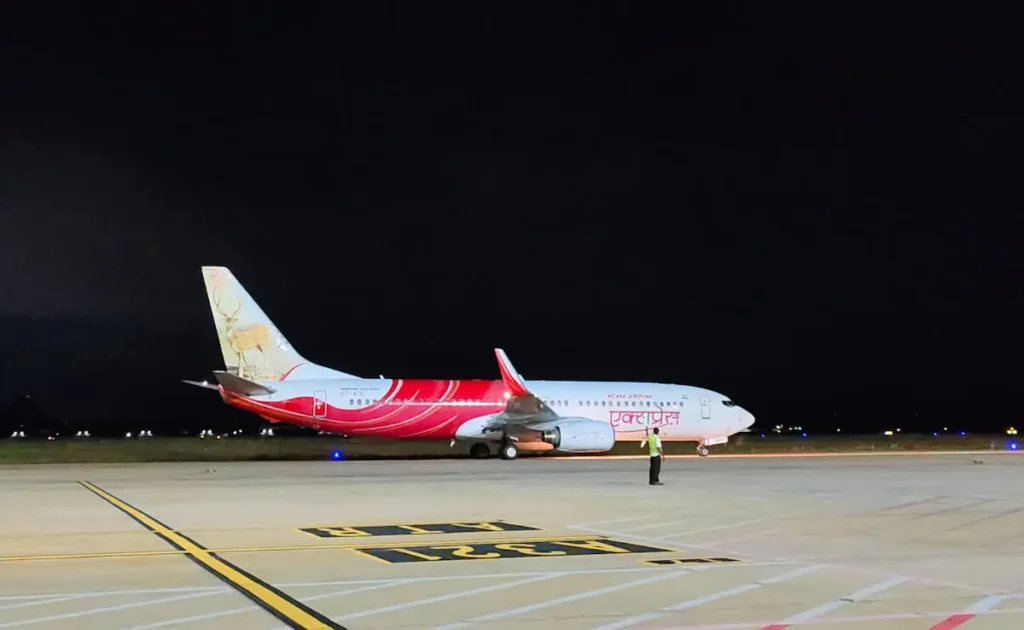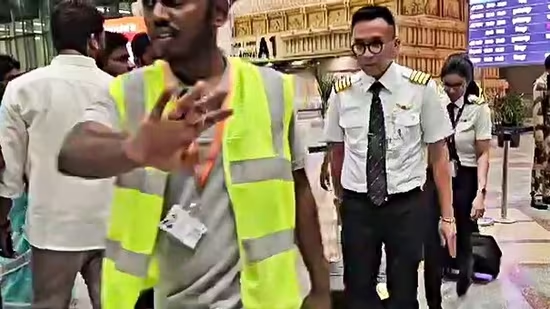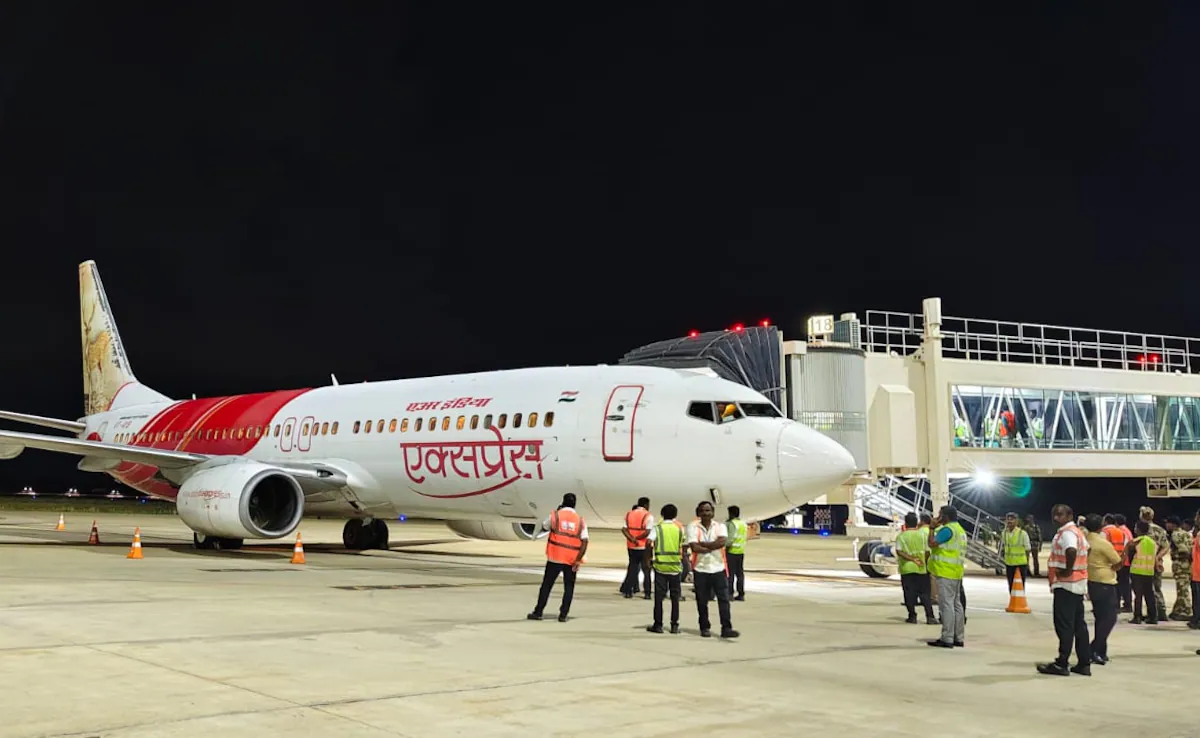The Highlights:
On October 12, 2024, on board a flight by Air India Express, flying out from Tiruchirappalli (Trichy) to Sharjah, the passengers witnessed an aircraft diagnosed with a mid-air technical malfunction. Panic levels were high, but the professional pilots of the flight pulled off the act with poise, keeping everyone safe on board: 170 passengers and crew in total. The accident once again highlighted the need for pilot training and in-flight safety measures.
According to the reported technical hitch, it seems it involved a failure of the aircraft’s pressurization system. This caused a sudden change in conditions inside the cabin. But despite the oblivious nature of the passengers about it till the last minute before landing, the pilots moved swiftly and controlled the situation.
What happened during the mid-air fright?
The Air India Express flight, IX 614 was en route from Dubai to Sharjah when the pilots indicated failure in the pressurization system controlling cabin at a high altitude for a safe and comfortable environment. The malfunction occurred midway and dropped cabin pressure; consequently it had to be abated promptly enough not to cause extreme discomfort or worse.

Despite the technical failure, pilots followed safety instructions, they set a proper altitude such that the pressure difference would decrease, and maintained the safe cabin environment for all passengers. It stabilized enough so that the passengers were informed of a safe landing only 30 minutes prior to landing in Sharjah. So this should have been done so that panic among the people should not be caused unnecessarily, to handle the situation more effectively.
Calm Under Pressure: Proof of Pilot Training
The pilots of Air India Express have been trained to act, and in this case, they acted fast and calmly. Such situations of pressurization emergencies inflight could easily get out of control, but the control exercised by the pilot over the situation really puts the ball at the door of proper training on the part of the pilot. The hours of simulation training for diverse emergencies, including loss of cabin pressure, help prepare the pilots.

As one aviation expert opined, in such cases, pilots are trained to come down to a safety altitude where the atmospheric pressure outside is sufficient for breathing without supplemental oxygen, apparently what happened to this case of the Trichy-Sharjah flight when its pilots went down in altitude safely continuing on.
Passengers, unaware of this until the final descent.
This aspect of the case is quite essential: the passengers were told about the technical hitch only 30 minutes before landing. For most of the time in that flight, the passengers had no idea that such a situation had arisen with the aircraft. Perhaps the avoidance of communication allowed panic to be kept out, enabling the pilots to focus on stabilizing the aircraft.
Most of the people were surprised when the passengers were finally told about the situation, but were relieved the way the pilots handled the situation. Some of the passengers even went to the media to commend the professionalism of the pilots and the crew that were very calm. Although the situation was a disaster in all the senses of the word, things could be much worse, and the passengers proved the assertion that all of them felt safe .
Aviation Safety Measures: The Importance of Protocols
The accident took place on Air India Express. The most critical issues of modern aviation are safety protocols. Issues related to pressurization are as few as any other issue but one of the most severe airborne malfunctions. The cabin pressure must be kept adequate for the health and well-being of its passengers, especially when breathing is inadequate at high altitudes.
Aircraft are designed with various forms of safety systems, like backup oxygen systems, and pressurization controls, and the pilots and crews are trained to follow strict procedures and methodologies in case of this type of failure, which can also involve descending to safer altitudes and making emergency landings. In this scenario, the crew’s decision to fly and land safely at Sharjah is a reflection of high confidence in the system of the aircraft and the training provided to the pilots .
Investigation and Follow-Up
Now that the immediate danger has passed, Air India Express and other aviation authorities will conduct a rigorous investigation to understand why the technical malfunction occurred. It would be important to identify the root cause of the malfunction so as not to let this scenario repeat itself in the near future. The aircraft will probably undergo a detailed check-up where any kind of repair or adjustment necessary will be carried out before it takes to the skies again.
As reported, the incident has been intimated to the DGCA, and the regulatory body may decide to carry out its independent inquiry. Given that safety checks and audits are mandatory post such incidents, it can be ensured that the passengers will remain safe while operational integrity will be maintained.
Conclusion: It Was Close But A Safe Landing
For the mid-air fear, it might have been just the end of all the passengers traveling from Tiruchi to Sharjah on Air India Express, but it was thanks to the pilots’ hard work and quick thinking that everyone on board survived. This incident has added the facts of training, safety features, and mission-critical systems to ensure passenger safety in modern aviation.
Though the passengers would not have known till the end that something was amiss, safety was never compromised because of the prompt action by the crew. For a clear future of such incidents, Air India Express and aviation authorities will continue to probe into the incident. For now, though, the hundreds of passengers and crew can breathe easily again, after a flight that tested not only the technology but the human expertise in keeping us safe in the skies.
For Latest News Updates Click Here
